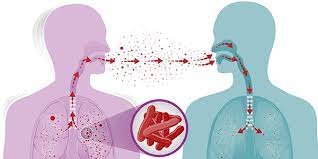Meghalaya along with Odisha, Chhattisgarh, Jharkhand and Madhya Pradesh have seen drastic decline in malaria in the country.
This was revealed in the World Malaria Report 2020 released by the World Health Organisation (WHO) a few days back.
Meghalaya has seen huge percentage of decline in malaria cases in 2019 as compared to 2018. According to the report, the State has seen 59.10 per cent decline in malaria cases during the period.
States and their percentage of decline in malaria cases include Odisha (40.35 per cent), Madhya Pradesh (36.50 per cent), Jharkhand (34.96 per cent) and Chhattisgarh (23.20 per cent).
Meghalaya, Odisha, Chhattisgarh, Jharkhand and Madhya Pradesh disproportionately accounted for nearly 45.47 per cent (1,53,909 cases out of India’s 3,38,494 cases) of malaria cases and 70.54 percent (1,10,708 cases out of India’s 1,56,940 cases) of falciparum malaria cases in 2019. 63.64 per cent (49 out of 77) of malaria deaths were also reported from these states.
Due to the efforts made by the Government of India in provision of microscopes, rapid diagnostics Long Lasting Insecticidal Nets (LLINs) – about 5 crores have been distributed in seven North-East states, Chhattisgarh, Jharkhand, Madhya Pradesh and Odisha up to 2018-19 and another 2.25 crore LLINs are being supplied/distributed during current financial year to high burden areas leading to reduction in endemicity in these otherwise very high endemic states.
Additional procurement of 2.52 crore LLINs is initiated. Use of LLINs has been accepted by the community at large and has been one of the main contributors to the drastic malaria decline in the country.
The World Malaria Report 2020 released by WHO, which gives the estimated cases for malaria across the world, based on mathematical projections, indicates that India has made considerable progress in reducing its malaria burden.
India is the only high endemic country which has reported a decline of 17.6 per cent in 2019 as compared to 2018. The Annual Parasitic Incidence (API) reduced by 27.6 per cent in 2018 compared to 2017 and by 18.4 per cent in 2019 as compared to 2018. India has sustained API less than one since year 2012.
India has also contributed to the largest drop in cases region-wide, from approximately 20 million to about 6 million. The percentage drop in the malaria cases was 71.8 per cent and deaths was 73.9 per cent between 2000 to 2019.
India achieved a reduction of 83.34 per cent in malaria morbidity and 92 per cent in malaria mortality between the year 2000 (20,31,790 cases, 932 deaths) and 2019 (3,38,494 cases, 77 deaths), thereby achieving Goal 6 of the Millennium Development Goals for 50-75 per cent decrease in case incidence between 2000 and 2019.






























